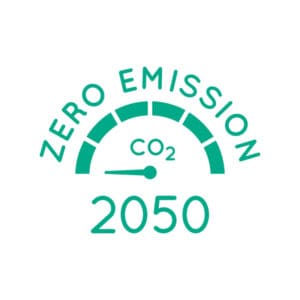Green Power Vs Conventional Power
When choosing between Green Power Vs Conventional Power make sure to consider the environmental costs and benefits of each option. Fossil fuels and nuclear fission emit greenhouse gases and have environmental costs associated with mining, drilling, and extraction. Nuclear power generation produces no greenhouse gases during power generation but requires long-term storage of radioactive waste. For these reasons, it is not a good option for many households or businesses. Instead, opt for renewable sources of energy.
What is Green Power?
Green power, a synonym for renewable energy or clean energy, represents a revolutionary approach to electricity generation, focusing on sustainable sources that exhibit minimal detrimental effects on the environment when compared to traditional fossil fuels. The fundamental principle behind green power lies in its utilization of abundant and renewable resources to fuel our energy needs while reducing greenhouse gas emissions and combatting climate change.
The primary sources of green power encompass an impressive array of natural elements. Solar power utilizes photovoltaic cells or concentrated solar power systems to convert sunlight into electricity, capitalizing on the virtually boundless energy provided by the sun. Wind power, on the other hand, harnesses the kinetic energy of moving air through the deployment of wind turbines, a strikingly beautiful sight that has proven to be highly efficient in generating clean electricity.
How Does Green Power Work?
Green power encompasses a diverse array of renewable energy technologies that work harmoniously to generate electricity while minimizing environmental impact. Let's delve into each of these green power methods in more detail:
Solar Power
Solar power revolves around the utilization of photovoltaic (PV) cells, which are capable of converting sunlight directly into electricity. These PV cells are typically embedded in solar panels, and when exposed to sunlight, they create a flow of electrons, generating an electric current. This electricity can be used immediately or stored in batteries for later use. Large-scale solar power plants, consisting of numerous solar panels, are commonly deployed in sunny regions to capture significant amounts of solar energy efficiently. Additionally, rooftop solar panels are popular in residential and commercial settings, allowing individual buildings to harness solar power for their energy needs.
Wind Power
Wind power capitalizes on the kinetic energy of moving air to produce electricity through the use of wind turbines. As the wind flows, it causes the turbine blades to rotate, turning the kinetic energy into mechanical energy. This mechanical energy is then converted into electricity by a generator. Wind farms are established in areas with consistent and strong winds, both onshore and offshore, as the strength and reliability of the wind are crucial for optimal energy production. By deploying multiple wind turbines in a wind farm, large amounts of clean electricity can be generated, contributing significantly to the green power landscape.
Hydroelectric Power
Hydroelectric power harnesses the power of flowing water to generate electricity. This is typically achieved through the construction of dams or the implementation of run-of-the-river systems. In dam-based systems, water is impounded, creating a reservoir with potential energy. The stored water is then released in controlled flows, passing through turbines, which convert the water's kinetic energy into electricity. Run-of-the-river systems, on the other hand, do not involve large-scale dams and instead direct the flowing water through turbines, producing electricity without significant water storage. Hydroelectric power is a reliable and consistent green power source, providing a stable energy supply.
Geothermal Power
Geothermal power exploits the Earth's natural heat to generate electricity. This involves tapping into geothermal reservoirs beneath the Earth's surface. Geothermal power plants use this natural heat to produce steam, which drives turbines connected to generators, generating electricity. In locations with geothermal resources closer to the surface, ground-source heat pumps can be used for heating and electricity generation. Geothermal energy is a reliable and renewable green power source that produces minimal greenhouse gas emissions.
Biomass Power
Biomass power centers on the utilization of organic materials, such as agricultural residues, wood pellets, and municipal solid waste, to generate heat or electricity. Biomass can be burned directly to produce heat, or it can be converted into biogas or biofuels, which can be utilized in power plants to generate renewable electricity. This approach not only helps in waste management by converting organic materials into useful energy but also reduces reliance on fossil fuels, contributing to a cleaner energy mix.
Advantages of Green Power
The adoption of green power brings forth a host of compelling advantages that surpass the capabilities of conventional power sources. Let us explore these benefits in greater detail:
Environmental Benefits
One of the most significant advantages of green power lies in its ability to combat climate change and alleviate air pollution. Unlike conventional power sources, green power generation produces little to no greenhouse gas emissions. By relying on renewable sources like solar, wind, hydroelectric, geothermal, and biomass, the carbon footprint associated with energy production is drastically reduced. This reduction in emissions contributes to curbing global warming and mitigating the adverse impacts of climate change. Additionally, the use of green power helps preserve natural ecosystems, protects wildlife habitats, and safeguards biodiversity, ensuring a healthier and more sustainable environment for current and future generations.
Sustainable and Renewable
Green power sources offer a sustainable and infinite supply of energy. Unlike finite fossil fuels, which face eventual depletion, renewable sources continuously replenish themselves through natural processes. Solar energy relies on the constant stream of sunlight, wind power harnesses the Earth's atmospheric currents, hydroelectric power draws from the perpetual flow of water, geothermal energy utilizes the Earth's internal heat, and biomass power depends on organic materials continually generated by nature. This renewable nature of green power ensures a stable and long-lasting energy supply, making it a key driver of sustainable development.
Energy Independence
Embracing green power initiatives fosters energy independence for nations and regions. By reducing reliance on imported fossil fuels, countries can bolster their energy security and reduce vulnerabilities to fluctuations in global fuel markets. With domestic green power resources, nations can become more self-reliant in meeting their energy needs, decreasing their exposure to geopolitical tensions and market uncertainties associated with fossil fuel imports. This enhanced energy independence not only strengthens national economies but also bolsters resilience in times of international crises.
Job Creation
The transition to green power presents a vast opportunity for job creation across various sectors of the economy. The renewable energy industry demands a skilled workforce in research, development, manufacturing, installation, and maintenance of green energy technologies. As governments and private enterprises invest in clean energy projects, a surge in employment opportunities arises, stimulating economic growth and revitalizing local communities. The growth of the green energy sector also spurs innovation and fosters the development of new technologies, further propelling economic advancement.
Renewable energy sources

We have been relying on non-renewable energy sources for thousands of years. These have been used to heat homes, power boats, and grind grain. However, these fossil fuels have negative effects on the environment and are contributing to global warming. By contrast, renewable energy sources are plentiful, ongoing, and free. Solar energy is a growing energy source and is used in agriculture and forestry. Biomass is a niche source of electricity but is becoming more common with the advancement of solar cells.
Other renewable energy sources can be used to generate electricity. For example, solar photovoltaic systems generate electricity directly. But in order to be effective, these systems must be converted into a steam or dynamo. In addition, renewable energy sources must be duplicated to meet demand and must be combined with large-scale electricity storage. This can be done through battery storage. And while solar photovoltaic systems are a great option for green power, there are many more issues to consider.
While the levelised cost of electricity from renewable energy sources is often more affordable than fossil fuels, some technologies require subsidies or a backup capacity. Wind and solar photovoltaic technology have made major advancements in recent decades, while solar thermal systems show great potential in sunny climates. Moreover, government support for renewable energy sources has reduced the costs, and solar and wind technologies are now competitive with fossil fuels. However, these technologies are not free from carbon emissions charges.
Hydrogen is a byproduct of renewable energy. Hydrolysis, the process in which water molecules split into hydrogen and oxygen, is created by excess renewable electricity. Hydrogen can be used in various applications, and it burns cleanly. Hydrogen can also be stored in fuel cells, which act like batteries in the production of electricity. Some types of cars run on hydrogen fuel cells. You can calculate your carbon dioxide offset by enrolling in a renewable power program.
There are many renewable energy sources in Canada. Canada's biomass resources are plentiful, and biomass is one of the fastest growing sources of electricity in Canada. Historically, wood has been used for cooking and space heating. Today, about 4.6 percent of households use wood for space heating, which is about seven percent of all residential energy. Further, the use of wood has many uses in Canada. A recent study concluded that wood energy produces approximately eight-gigawatt hours of electricity each year.
Bioenergy is often touted as the answer to the climate crisis, but it fails to live up to its promises. Two new bills in Texas could put the Prairie State on the path to 100 percent renewable energy. However, Texas's fossil fuel tax breaks outstrip its renewable energy tax credits by about two to one. The city of Albuquerque is making a big push toward renewable power and is building a solar workforce to keep the city on track.
Zero-emission energy sources

While solar and wind power can help power the grid, they are not the only options. Many utilities will have to re-configure their plans if they want to achieve their zero-emissions goal. Next-generation technologies like long-duration energy storage and small modular nuclear reactors are needed to achieve this goal. Another option is natural gas peaker plants that can run on methane and green hydrogen.
Geothermal energy is stored underground and needs drilling to access it, but it can be a huge resource if properly harnessed. Thousands of years ago, geothermal energy was used for bathing in hot springs, but this natural energy can be captured and converted into electricity through turbines. If harnessed, geothermal energy can produce as much as 10 times the amount of electricity that coal does.
Oxy-fuel combustion technology was developed by Clean Energy Systems, a company with decades of experience in clean power. The company's technology utilizes pure oxygen for fuel combustion, producing zero atmospheric pollution and commercial CO2.
Nuclear energy has twice the EROI of coal. The carbon footprint of a nuclear power plant is about five percent. Wind and solar power, by contrast, have a carbon footprint of four grams per kilowatt-hour. In comparison, wind and solar power can be used only 90 percent of the time, so their value is lower than that of other energy sources. The carbon footprint of nuclear and solar energy is lower than that of coal, gas with CCS, and bioenergy.
Renewable energy is the best option for green power. These types of energy are free and abundant. They produce fewer greenhouse gas emissions and other pollutants than fossil fuels. Renewable energy is clean energy – the opposite of fossil fuels. These sources are also easier to access. Further, they are also better for human health. Ultimately, green power is an investment in our future. It is time for us to make the switch to renewable energy.
Low-carbon alternatives like wind and solar power are also the most expensive. However, they do not cost much more than coal or gas combined cycle, which is the other two leading low-carbon technologies. In comparison, wind and solar costs only a few cents more per KWH. So, in the long run, they will save us a great deal of money. If you are considering making this switch, they are worth the money.
Biomass can be turned into fuel. In 2010, it supplied 2.7% of the world's transportation fuel. It is estimated that biomass will meet 25 percent of transportation fuel needs by 2050. By 2020, it is possible to convert waste into fuel. And if all other means fail, you can convert biomass into electricity. A ton of garbage can produce 550-750 kWh of electricity. But we will need to continue implementing these new policies and regulations to reach our zero-emissions goal.
Geothermal energy
Geothermal energy is a renewable resource. It is a source of heat that is derived from the Earth's subterranean heat, which is released as steam and serves many human needs throughout history. In the eighteenth century, men pioneered the first industrial uses for geothermal energy and opened the door to electricity in the nineteenth. Using geothermal energy for green power has many advantages.
There are two major methods of harnessing geothermal heat: open-loop geothermal systems, and closed-loop geothermal systems. Open-loop systems are more efficient, since they do not use fluids, and don't require fracking. Open-loop systems are more efficient because they use sealed pipes or boreholes to collect heat from deep beneath the earth. The heated fluids then travel to the surface to generate electricity. The closed-loop geothermal system is the most widely used, though, as it can generate a tunable mix of electricity and heat. Startups have also amplified this technology by using technologies from the oil and gas industry. One such company is Savor.
Regulatory reform is necessary to make geothermal energy more accessible. In the United States, 91% of geothermal energy potential is located on federal lands, so any new project will require federal permitting and environmental review under the National Environmental Policy Act, or NEPA. NEPA delays projects by eight years. Geothermal projects can be increased by 500% if the environmental review process is streamlined. In addition, the Department of Energy estimates that the United States can achieve 100 percent geothermal capacity by 2050. The Department of Energy should continue its research and development on new technologies, as well as develop a centralized permitting system through the Bureau of Land Management.
Supercritical water has greater enthalpy than water. It is hotter than steam and almost doubles the Carnot efficiency of electricity conversion. So, if geothermal energy is used at 400degC, it would produce 50MW of electricity and be 42 percent hotter than 200degC. It would require three wells and would only use a small fraction of the fluid needed. However, the amount of footprint would be much lower than the amount required with the previous method.
There are many other uses for geothermal energy besides electricity generation. It can be used for direct-use heating of buildings, for example, and even in fish farms and for pasteurizing milk. For this reason, geothermal is a perfect solution for green power. It is also a great solution for the struggling oil and gas industry. It is clean, and renewable, and it doesn't degrade the planet.
One of the major benefits of geothermal energy is its abundance and availability. It is available anywhere on Earth and uses less land than any other source of energy. In addition, geothermal energy plants can last for decades or even centuries if they are properly managed. A well-managed geothermal reservoir can balance the amount of energy extracted with the rate at which the rock is renewing heat. The process has few negative environmental effects compared to other methods of electricity generation.
Conclusion
After delving into the details of green power, renewable energy sources, and the potential of geothermal energy, I am left inspired and hopeful about our energy future. As an individual seeking a sustainable and eco-conscious lifestyle, I find myself drawn to the idea of embracing green power solutions for both personal and global benefits.
The advantages of green power are truly compelling. From its significant environmental benefits, such as mitigating climate change, reducing air pollution, and preserving our precious ecosystems, to its commitment to sustainability and energy independence, green power offers a path towards a cleaner and brighter future. I am motivated to play my part in reducing greenhouse gas emissions and supporting renewable energy initiatives to protect our planet for generations to come.
Sources
https://www.savor-tech.com/geothermal-energy/
https://www.epa.gov/geothermal-heat-pumps


